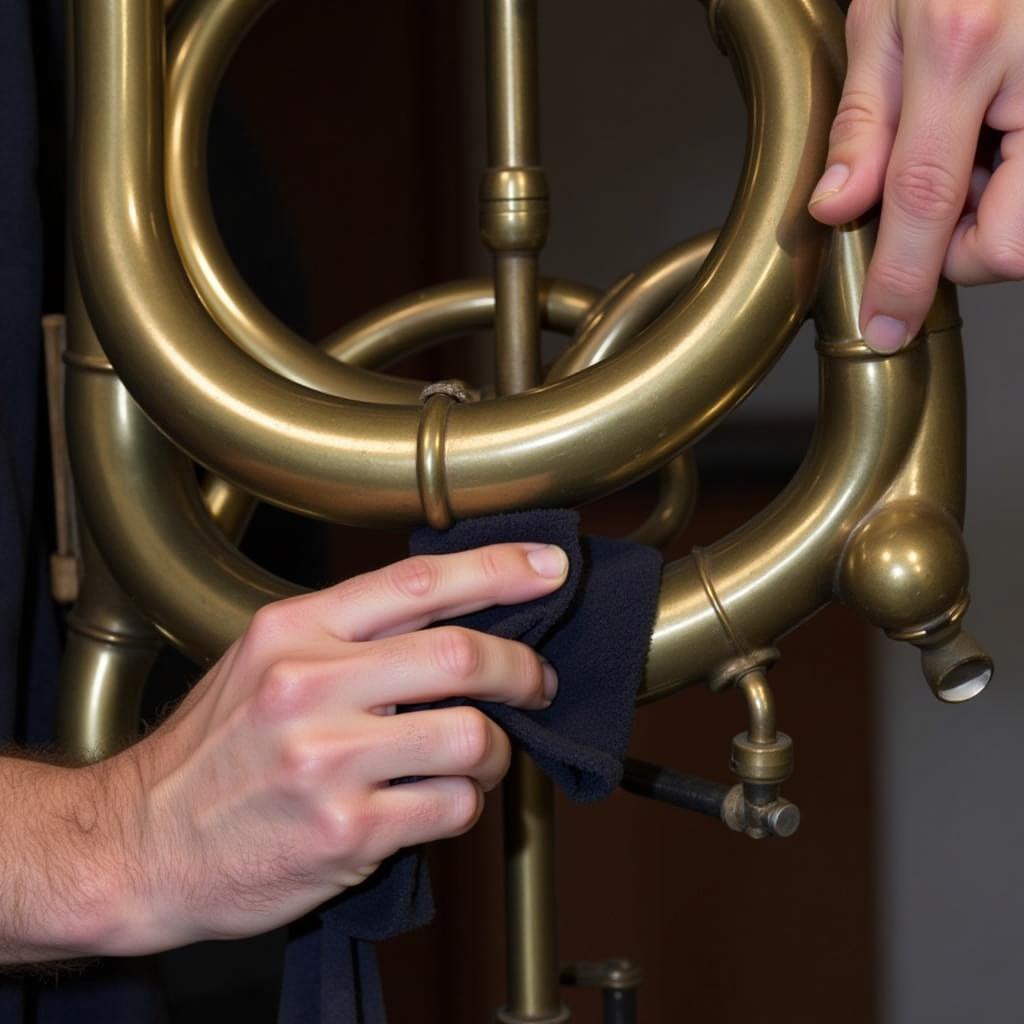Horse Brasses On Leather Straps, often seen adorning draft horses, are more than just beautiful decorations. Steeped in history and tradition, these shining ornaments offer a glimpse into the past and add a touch of elegance to any harness. Whether you’re a seasoned equestrian or simply admire the craftmanship, understanding the significance and care of horse brasses can deepen your appreciation for this timeless tradition.
 Antique horse brasses displayed on a leather strap
Antique horse brasses displayed on a leather strap
A Look Back: The History of Horse Brasses
The origins of horse brasses can be traced back centuries, with some historians linking them to ancient amulets believed to ward off evil spirits and protect both horse and rider. While their initial purpose remains shrouded in folklore, horse brasses evolved into practical tools for identification and decoration, particularly during the 18th and 19th centuries in England.
As horse-drawn transportation thrived, brasses became a status symbol among carters and wagoners. Elaborate designs and family crests adorned harnesses, showcasing pride in their trade and lineage. Specific brass designs also served as a form of early “branding,” identifying horses from different farms or regions.
Choosing the Right Brasses: Materials and Designs
Horse brasses are typically made from brass, a durable alloy of copper and zinc known for its resistance to corrosion. The malleable nature of brass allowed craftsmen to create intricate designs, ranging from simple geometric patterns to detailed depictions of animals, flowers, and heraldic symbols.
Today, you can find horse brasses on leather straps in a variety of styles and finishes. Antique brasses, with their rich patina and historical significance, are highly sought after by collectors. Modern brasses offer a wide range of designs, often incorporating traditional motifs with contemporary aesthetics.
Caring for Your Horse Brasses: Preservation and Cleaning
Proper care ensures your horse brasses on leather straps remain gleaming for years to come. Regular dusting with a soft cloth helps prevent dirt and grime buildup. For deeper cleaning, a gentle solution of warm soapy water and a soft-bristled brush can be used sparingly. Avoid harsh chemicals or abrasive cleaners, as these can damage the brass and leather.
When not in use, store your horse brasses in a cool, dry place away from direct sunlight or extreme temperatures. Wrapping them in acid-free tissue paper can further protect them from tarnishing and preserve their beauty.
 Cleaning horse brasses with soft cloth
Cleaning horse brasses with soft cloth
Beyond Decoration: The Enduring Appeal of Horse Brasses
While horse brasses on leather straps may no longer serve their original purpose of identification or superstition, their allure remains strong. They offer a tangible connection to the past, showcasing the artistry and craftsmanship of a bygone era.
“Horse brasses are like little windows into history,” says Emily Carter, a renowned equine historian and collector. “Each one tells a story, whether it’s the story of the craftsman who made it, the horse who wore it, or the family it represented.”
Today, horse brasses are cherished by collectors, horse enthusiasts, and history buffs alike. They add a touch of rustic charm to homes, stables, and tack rooms, serving as a reminder of the enduring bond between humans and horses.